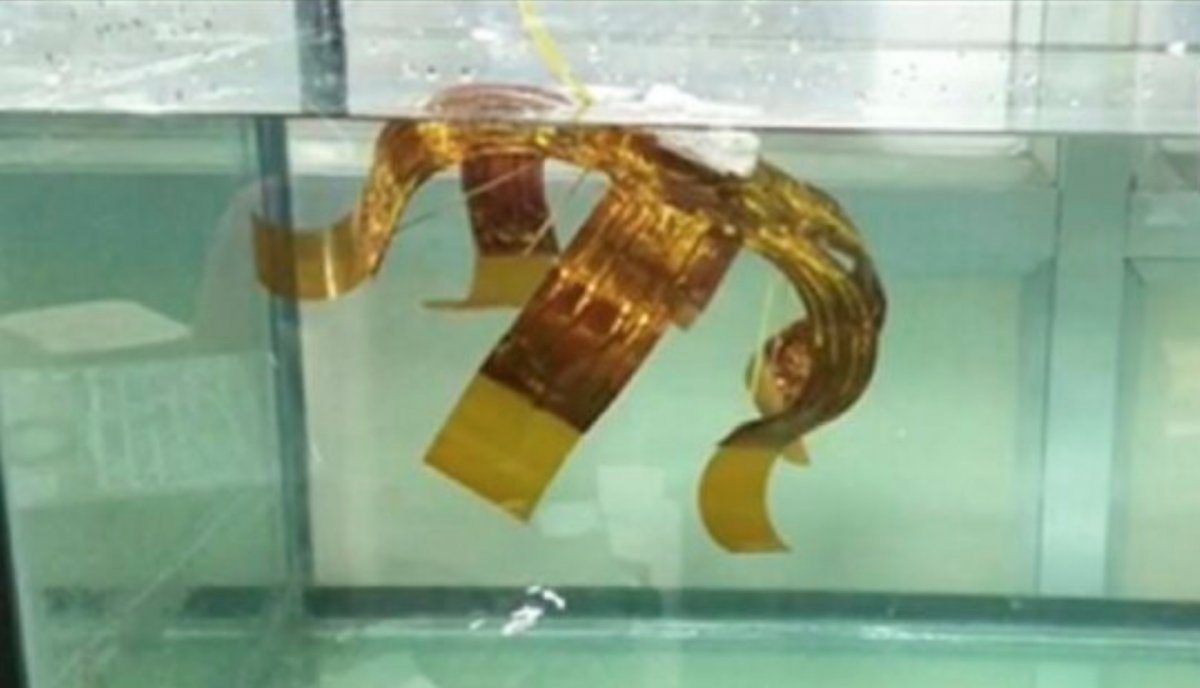A research team from the Indian Institute of Technology Indore and Indian Institute of Technology Jodhpur has developed a jellyfish robot that imitates the movements and biological processes of a real jellyfish. The researchers constructed the robot using a body made of polyimide, powered by a shape-memory alloy. In their study titled “Bio-inspired soft jellyfish robot: a novel polyimide-based structure actuated by shape memory alloy”, published in the International Journal of Intelligent Robotics and Applications, the scientists explain that they replicated the impulse and recovery process of a jellyfish swimming.
To create the jellyfish body, the researchers used polyamide-based tape, cut into thin 75 micrometre sheets. They formed a symmetrical structure, resembling a jellyfish with a 25 cm diameter. They then inserted wires made of a shape-memory alloy (SMA) into holes punched at specific points on the body. The chosen SMA, Nitinol, is a nickel-titanium alloy that deforms when exposed to heat and returns to its original shape when cooled. The wires were fixed to the robot body using polyamide tape, and the tentacles were attached to the body using rubber cords.
The scientists conducted experiments by varying the heating and cooling times of the wires to determine the most effective thrust for locomotion. The jellyfish robot achieved a maximum horizontal swimming speed of 10 mm/s and a vertical speed of 0.2 mm/s. The robot is constructed using easily accessible and affordable materials and can be scaled to different sizes.
The prototype of the jellyfish robot was equipped with a camera and a sonar sensor for object detection, both housed in a waterproof bell jar. The researchers acknowledge that further improvements are necessary to make the robot more practical. Once enhanced, this jellyfish robot could be custom-designed for specific applications and potentially brought to market. One potential application is the monitoring of underwater environments.
In conclusion, the research team from the Indian Institute of Technology Indore and Indian Institute of Technology Jodhpur has successfully developed a jellyfish robot that emulates the movements of a real jellyfish. Using a combination of polyimide materials and shape-memory alloy wires, the researchers achieved a practical swimming speed and demonstrated the robot’s potential for underwater monitoring. Further improvements are required before the jellyfish robot can be fully utilized, but its easily obtainable and scalable construction make it a promising development in the field of bio-inspired robotics.


